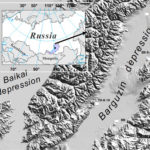Jinyan L. CHARACTERISTICS OF VARIATIONS IN ECOLOGICAL WATER REQUIREMENT OF FORESTLANDS AND GRASSLANDS IN THE ARID REGION
IN CENTRAL AND SOUTHERN NINGXIA // Arid ecosystems. 2019. V. 25. № 4 (81). P. 3-15. | PDF
Reasonable development of vegetation cover is an important measure to improve ecological environment in arid regions, so research on ecological water requirement of vegetation has become a hot issue in the domain of ecology and hydrology. This study chose 8 counties in central and southern Ningxia province from north to south, which are located in the arid region of northwest China, as research object to estimate the potential evapotranspiration and ecological water requirement of the local vegetation based on meteorological data, vegetation distribution data, water resources condition data and so on. This effort can help us to understand and master the spatial and temporal distribution rules of ecological water requirement, and provides a basis for the planning and construction of forest-grass vegetation in the region. Firstly, Thornthwaite model and Penman-Monteith model were used to calculate the ecological water requirement quota, and the calculation results obtained by the models were compared, showing that results obtained by Penman-Monteith model were more rational because the model integrates all sorts of meteorological factors and the geographical position factor. At the same time, Jensen formula and the regional soil characteristic curve were used to determine soil moisture correction coefficient, for the calculation of ecological water requirement. Secondly, estimate potential evapotranspiration of regional vegetation and ecological water requirement of precipitation-consumptive vegetation were estimated from month to month. On this basis, we analyzed spatial and temporal variation characteristics of potential evapotranspiration. The results show that potential evapotranspiration was on an increasing trend month by month from January to July, and on a decreasing trend from August to December. As for spatial distribution, potential evapotranspiration increased gradually from the south to the north. Spatial variation of balance law between rainfall and ecological water requirement for vegetation was analyzed, and the results show that ecological water shortage in the central region was more serious than that in the southern region, and the most serious water shortage was found in Yanchi which is the northernmost county in the central arid region. On the contrary, ecological water requirement of forestlands was in a state of surplus throughout the growing season in Jingyuan County which is located in the southernmost. Spatial and temporal variation of relationship between precipitation-consumptive ecological water requirement and water resources was discussed further more. The results show that there is still adequate room for the regional vegetation construction in Yanchi, Tongxin, and Haiyuan in the central arid region and relatively dry areas such as Yuanzhou, Xiji, Pengyang in southern mountainous area, and the room for increasing vegetation coverage is bigger in Longde and Jingyuan which are relatively abundant in rainfall and located in the southern mountainous area.
Keywords: ecological water requirement, water resource, rainfall resource, forestland, grassland, Central and Southern Ningxia.
DOI: 10.24411/1993-3916-2019-10069










